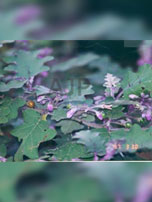SHAHEED KARTAR SINGH SARABHA AYURVEDIC MEDICAL COLLEGE & HOSPITAL
Affiliated to Guru Ravidas Ayurved University, Hoshiarpur Punjab
Affiliated to Guru Ravidas Ayurved University, Hoshiarpur Punjab

Botanical Name : Solanum indicum Linn
Family : Solanaceae
Introduction :
Brhat Trayi mostly described it along with Kantakãri. Hence the name Brhati dravya.
Names in different Indian languages :
Hindi : Barhanta,birhatta
Telugu : Cittimulaga,tellamulaka,kakamunci
Tamil : Karimulli,puttiriccuntai, Mullamkatti, Papparamulli
English : Poison berry
Marathi : Dorali
Gujarati : subhiringani;Bengali,Rambegun
Kanada : Ramgula,vanavrntaki
Malayalam : Puttiriccunta,cerucunta,ceruvalutina
Sanskrit : Brhati, simhi
Synonyms :
Kshudrabhantaaki, Kateri, Duspradharsini, Mahati, Vãrtãki, Simhi, Hinguli,Solanum anguivi Lam.
Classification according to Charaka, Susrutha & Vagbhata :
Charaka : Kanthya, Hikkanigrahana, sothahara, Angamardaprasamana
Susrutha : Brhatyãdi, Laghu pancamula
Vagbhata : Brhatyãdi
Varieties & adulterants – (CV – controversy, AD – adulterants) :
1. sveta Brhati – S. torvum
2. Simhi,
3. Kantakãri,
4. Nidigdhika,
5. Valli Brhati,
6. Vrtra Brhati,
7. Alãmbu phala Brhati,
8. Amla Brhati,
9. Jala Brhati
10. Sthüla Brhati.
11. S. Insanum
12. S. Torvum
13. S. Ferox
14. S. Aungvii
15. S: trilobatum
16. S. Melongena
17. S. Insanum
18. S. Helicantum
19. S. Torvum
Morphology :
Herbaceous, stout, about 2 m high, prickly and densely wooly.
Leaves— simple, large,o vate with short triangular lobes, villous above, stellately fulvous-woolly beneath.
Flowers— in dense racemes, wooly, with needle-like hairs; shortly, funnel-shaped, lobes -ovate-triangular; corolla white-blue, oblong, acute.
Fruits— berries, yellow when ripe.
Seeds— smooth, many.
Flowers and fruits during April-July.
Distribution & Habitat :
Found in the tropical parts of India.
Chemical constituents :
Solanine, Carotene, Carpesterol, Solanocarpone, diosogenin, beta-sitosterol, lanosterol, solasonine, solarnargine, solasodine, vit. C etc.
Properties :
Rasa -Katu, Tikta
Guna -Laghu, Rüksa
Virya -Usna
Vipãka -Katu
Karma :
Kapha-vata hara. Sukra, recaka, kasaghna,rasayana
carminative, expectorant, Digestive, diuretic, laxative,
Indication :
svãsa, Hrdroga, Sula, Jvara, Chardi, Kustha, Kandü, Krmi.pruritus, colic, skin disease, fever, vomiting, antibacterial, cough, asthma
Part used :
Root, fruit.
Dosage :
Powder3-5.g; decoction 50-100 ml.
External uses :
Fumigation with this mixture also helps. Powdered seeds are applied on the genitalia in impotency. In unconsciousness, the powder of the seeds is administered Nasally
Internal uses :
Digestive system : It is ushna virya. deepana, pachana, astringent and anthelmintic. It is therefore used in indigestion, colic, anorexia and worm infestation. In vomiting, juice of the fruits + cow’s ghee+ honey is given.
Circulatory system : Since it is a cardiac tonic, blood purifier and diuretic, it is used in cardiac failure. oedema and blood disorders.
Respiratory system : It reduces cough and asthma. It is an excellent remedy for rhinitis, cough, asthma, soar throat and hiccups.
Urinary system Since it is a diuretic. its used in dysuria and calculi.
Reproductive system Its seeds have oxytocic and aphrodisiac properties. It is useful in ammenorrhoea, dysmenorrhoea and puerperal disorders. Seeds also promote virility.
Temperature: Febrifuge. Hence it is used in fever caused by vata and kapha.
Important Yogas or Formulations :
Brhatyadi kwath, Bnihatyadi gana, Dashamoolarishta. Brhatyadi Kasaya, Pippalyãdi leha.
Therapeutic Uses :
(1) Grahani— Brhati is taken with butter milk (S.O.S. 2/5/28).
(2) Khãlitya— Fresh juice of Brhati fruit is mixed with honey and used for local application (V.M. & G.N.).
(3) Prajãsthãpana— sveta Brhati root juice is given as Nasya (V. S.).
